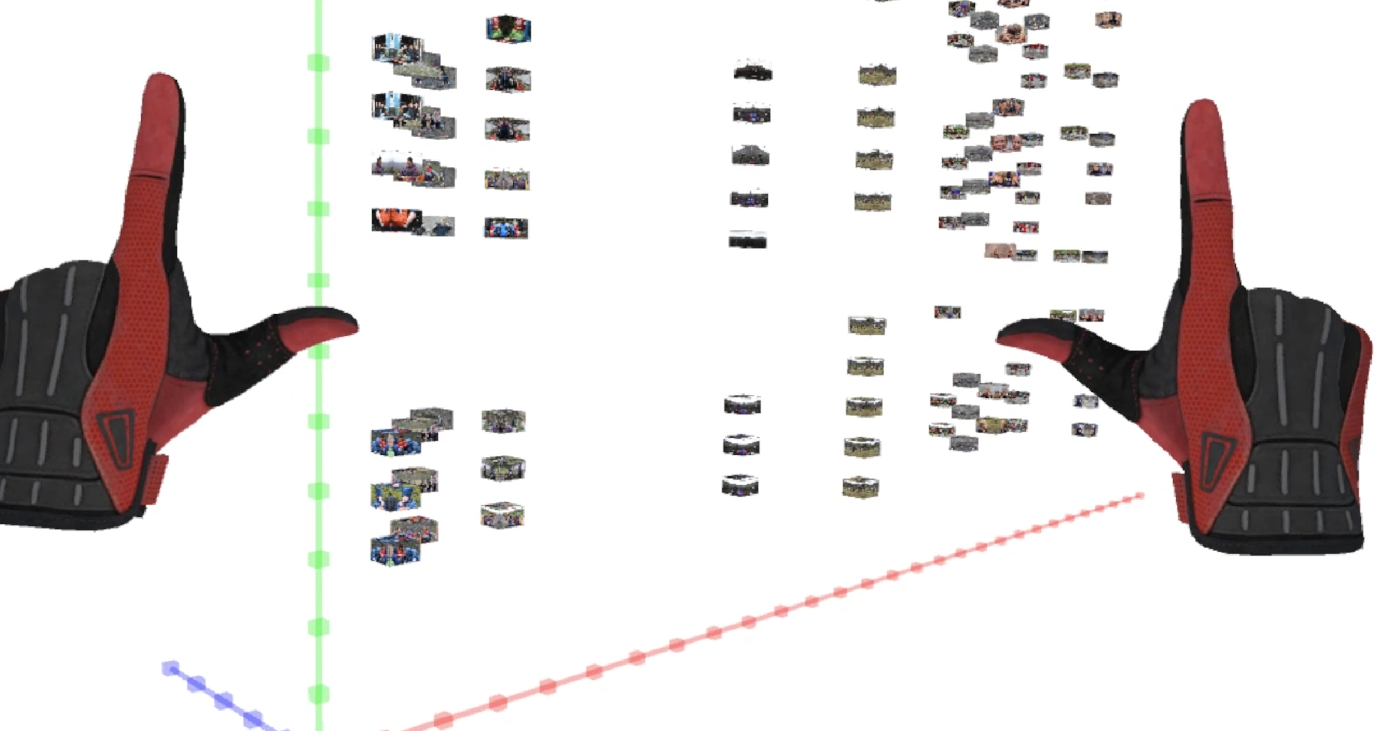
 MSc and BSc Projects: Media Exploration in VR
MSc and BSc Projects: Media Exploration in VR
 Virtual reality (VR) presents a new approach for users to interact with computer systems and applications. Due to its recent emergence, however, the designers of complex systems are still learning how to design and optimize the user experience for VR. At the same time, multimedia analytics, a field aimed at analyzing and understanding multimedia collections, has been rapidly developing. In the MMX-VR project (http://staff.ru.is/bjorn/#main/mmx-vr.html) at Reykjavik University, we are developing the ViRMA system, a novel approach to multimedia analytics using a VR interface.
Virtual reality (VR) presents a new approach for users to interact with computer systems and applications. Due to its recent emergence, however, the designers of complex systems are still learning how to design and optimize the user experience for VR. At the same time, multimedia analytics, a field aimed at analyzing and understanding multimedia collections, has been rapidly developing. In the MMX-VR project (http://staff.ru.is/bjorn/#main/mmx-vr.html) at Reykjavik University, we are developing the ViRMA system, a novel approach to multimedia analytics using a VR interface.
We can propose projects for M.Sc. and B.Sc. students with a variety of interests, including back-end development, front-end development, and user studies, under the supervision of Dr. Björn Þór Jónsson.
In the following, are some project ideas.
All projects can be scaled up or down, depending on the level of the project (BSc vs. MSc Project vs. MSc Thesis) and the number of students. We are also open to other project ideas that fit within the MMX-VR project. For more information, please contact Björn (bjorn@ru.is).
 Map-Based Exploration
Map-Based Exploration
Geolocation is one fundamental type of media metadata, which can enable many useful interactions with a variety of data. One such example is location-based exploration of lifelog data, which allows the lifelog owner to retrace their steps over time, or to visualise their travels across a time period. The potential of geolocation remains to be utilised and explored, in particular in the VR-based ViRMA system. This project proposes to create a new geolocation tag type for the M3 database and use existing map services to enable geolocation-based exploration in the ViRMA system.
 Multi-Collection Exploration in ViRMA
Multi-Collection Exploration in ViRMA
Currently, each media collection explored in ViRMA must reside in its own PostgreSQL database, and to explore a new collection the system must be initialised with new database parameters. This project aims to merge collections with different media types, different metadata and different content into a single database, and allow VR users to seamlessly explore either the joint collection or individual subcollections. This requires working on the system both in the user interface (Unity/VR) and the server (gRPC+Go/PostgreSQL).
 Virtual reality (VR) presents a new approach for users to interact with computer systems and applications. Due to its recent emergence, however, the designers of complex systems are still learning how to design and optimize the user experience for VR. At the same time, multimedia analytics, a field aimed at analyzing and understanding multimedia collections, has been rapidly developing. In the MMX-VR project (http://staff.ru.is/bjorn/#main/mmx-vr.html) at Reykjavik University, we are developing the ViRMA system, a novel approach to multimedia analytics using a VR interface.
Virtual reality (VR) presents a new approach for users to interact with computer systems and applications. Due to its recent emergence, however, the designers of complex systems are still learning how to design and optimize the user experience for VR. At the same time, multimedia analytics, a field aimed at analyzing and understanding multimedia collections, has been rapidly developing. In the MMX-VR project (http://staff.ru.is/bjorn/#main/mmx-vr.html) at Reykjavik University, we are developing the ViRMA system, a novel approach to multimedia analytics using a VR interface.